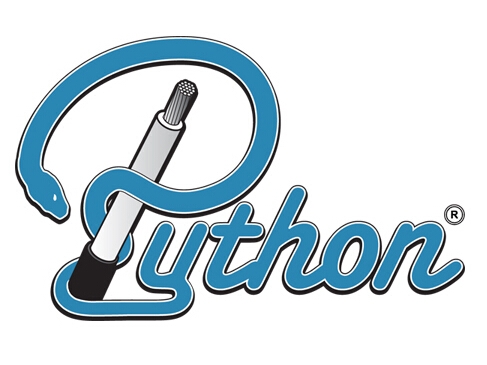类的定义
假如要定义一个类 Point,表示二维的坐标点:
- # point.py
- class Point:
- def __init__(self, x=0, y=0):
- self.x, self.y = x, y
最最基本的就是 __init__ 方法,相当于 C++ / Java 的构造函数。带双下划线 __ 的方法都是特殊方法,除了 __init__ 还有很多,后面会有介绍。
参数 self 相当于 C++ 的 this,表示当前实例,所有方法都有这个参数,但是调用时并不需要指定。
- >>> from point import *
- >>> p = Point(10, 10) # __init__ 被调用
- >>> type(p)
- <class 'point.Point'>
- >>> p.x, p.y
- (10, 10)
几乎所有的特殊方法(包括 __init__)都是隐式调用的(不直接调用)。
对一切皆对象的 Python 来说,类自己当然也是对象:
- >>> type(Point)
- <class 'type'>
- >>> dir(Point)
- ['__class__', '__delattr__', '__dict__', ..., '__init__', ...]
- >>> Point.__class__
- <class 'type'>
Point 是 type 的一个实例,这和 p 是 Point 的一个实例是一回事。
现添加方法 set:
- class Point:
- ...
- def set(self, x, y):
- self.x, self.y = x, y
- >>> p = Point(10, 10)
- >>> p.set(0, 0)
- >>> p.x, p.y
- (0, 0)
p.set(...) 其实只是一个语法糖,你也可以写成 Point.set(p, ...),这样就能明显看出 p 就是 self 参数了:
- >>> Point.set(p, 0, 0)
- >>> p.x, p.y
- (0, 0)
值得注意的是,self 并不是关键字,甚至可以用其它名字替代,比如 this:
- class Point:
- ...
- def set(this, x, y):
- this.x, this.y = x, y
与 C++ 不同的是,“成员变量”必须要加 self. 前缀,否则就变成类的属性(相当于 C++ 静态成员),而不是对象的属性了。
访问控制
Python 没有 public / protected / private 这样的访问控制,如果你非要表示“私有”,习惯是加双下划线前缀。
- class Point:
- def __init__(self, x=0, y=0):
- self.__x, self.__y = x, y
- def set(self, x, y):
- self.__x, self.__y = x, y
- def __f(self):
- pass
__x、__y 和 __f 就相当于私有了:
- >>> p = Point(10, 10)
- >>> p.__x
- ...
- AttributeError: 'Point' object has no attribute '__x'
- >>> p.__f()
- ...
- AttributeError: 'Point' object has no attribute '__f'
_repr_
尝试打印 Point 实例:
- >>> p = Point(10, 10)
- >>> p
- <point.Point object at 0x000000000272AA20>
通常,这并不是我们想要的输出,我们想要的是:
- >>> p
- Point(10, 10)
添加特殊方法 __repr__ 即可实现:
- class Point:
- def __repr__(self):
- return 'Point({}, {})'.format(self.__x, self.__y)
不难看出,交互模式在打印 p 时其实是调用了 repr(p):
- >>> repr(p)
- 'Point(10, 10)'
_str_
如果没有提供 __str__,str() 缺省使用 repr() 的结果。
这两者都是对象的字符串形式的表示,但还是有点差别的。简单来说,repr() 的结果面向的是解释器,通常都是合法的 Python 代码,比如 Point(10, 10);而 str() 的结果面向用户,更简洁,比如 (10, 10)。
按照这个原则,我们为 Point 提供 __str__ 的定义如下:
- class Point:
- def __str__(self):
- return '({}, {})'.format(self.__x, self.__y)
_add_
两个坐标点相加是个很合理的需求。
- >>> p1 = Point(10, 10)
- >>> p2 = Point(10, 10)
- >>> p3 = p1 + p2
- Traceback (most recent call last):
- File "<stdin>", line 1, in <module>
- TypeError: unsupported operand type(s) for +: 'Point' and 'Point'
添加特殊方法 __add__ 即可做到:
- class Point:
- def __add__(self, other):
- return Point(self.__x + other.__x, self.__y + other.__y)
- >>> p3 = p1 + p2
- >>> p3
- Point(20, 20)
这就像 C++ 里的操作符重载一样。
Python 的内建类型,比如字符串、列表,都“重载”了 + 操作符。
特殊方法还有很多,这里就不逐一介绍了。
继承
举一个教科书中最常见的例子。Circle 和 Rectangle 继承自 Shape,不同的图形,面积(area)计算方式不同。
- # shape.py
- class Shape:
- def area(self):
- return 0.0
- class Circle(Shape):
- def __init__(self, r=0.0):
- self.r = r
- def area(self):
- return math.pi * self.r * self.r
- class Rectangle(Shape):
- def __init__(self, a, b):
- self.a, self.b = a, b
- def area(self):
- return self.a * self.b
用法比较直接:
- >>> from shape import *
- >>> circle = Circle(3.0)
- >>> circle.area()
- 28.274333882308138
- >>> rectangle = Rectangle(2.0, 3.0)
- >>> rectangle.area()
- 6.0
如果 Circle 没有定义自己的 area:
- class Circle(Shape):
- pass
那么它将继承父类 Shape 的 area:
- >>> Shape.area is Circle.area
- True
一旦 Circle 定义了自己的 area,从 Shape 继承而来的那个 area 就被重写(overwrite)了:
- >>> from shape import *
- >>> Shape.area is Circle.area
- False
通过类的字典更能明显地看清这一点:
- >>> Shape.__dict__['area']
- <function Shape.area at 0x0000000001FDB9D8>
- >>> Circle.__dict__['area']
- <function Circle.area at 0x0000000001FDBB70>
所以,子类重写父类的方法,其实只是把相同的属性名绑定到了不同的函数对象。可见 Python 是没有覆写(override)的概念的。
同理,即使 Shape 没有定义 area 也是可以的,Shape 作为“接口”,并不能得到语法的保证。
甚至可以动态的添加方法:
- class Circle(Shape):
- ...
- # def area(self):
- # return math.pi * self.r * self.r
- # 为 Circle 添加 area 方法。
- Circle.area = lambda self: math.pi * self.r * self.r
动态语言一般都是这么灵活,Python 也不例外。
Python 官方教程「9. Classes」***句就是:
Compared with other programming languages, Python’s class mechanism adds classes with a minimum of new syntax and semantics.
Python 以最少的新的语法和语义实现了类机制,这一点确实让人惊叹,但是也让 C++ / Java 程序员感到颇为不适。
多态
如前所述,Python 没有覆写(override)的概念。严格来讲,Python 并不支持「多态」。
为了解决继承结构中接口和实现的问题,或者说为了更好的用 Python 面向接口编程(设计模式所提倡的),我们需要人为的设一些规范。
请考虑 Shape.area() 除了简单的返回 0.0,有没有更好的实现?
以内建模块 asyncio 为例,AbstractEventLoop 原则上是一个接口,类似于 Java 中的接口或 C++ 中的纯虚类,但是 Python 并没有语法去保证这一点,为了尽量体现 AbstractEventLoop 是一个接口,首先在名字上标志它是抽象的(Abstract),然后让每个方法都抛出异常 NotImplementedError。
- class AbstractEventLoop:
- def run_forever(self):
- raise NotImplementedError
- ...
纵然如此,你是无法禁止用户实例化 AbstractEventLoop 的:
- loop = asyncio.AbstractEventLoop()
- try:
- loop.run_forever()
- except NotImplementedError:
- pass
C++ 可以通过纯虚函数或设构造函数为 protected 来避免接口被实例化,Java 就更不用说了,接口就是接口,有完整的语法支持。
你也无法强制子类必须实现“接口”中定义的每一个方法,C++ 的纯虚函数可以强制这一点(Java 更不必说)。
就算子类「自以为」实现了“接口”中的方法,也不能保证方法的名字没有写错,C++ 的 override 关键字可以保证这一点(Java 更不必说)。
静态类型的缺失,让 Python 很难实现 C++ / Java 那样严格的多态检查机制。所以面向接口的编程,对 Python 来说,更多的要依靠程序员的素养。
回到 Shape 的例子,仿照 asyncio,我们把“接口”改成这样:
- class AbstractShape:
- def area(self):
- raise NotImplementedError
这样,它才更像一个接口。
super
有时候,需要在子类中调用父类的方法。
比如图形都有颜色这个属性,所以不妨加一个参数 color 到 __init__:
- class AbstractShape:
- def __init__(self, color):
- self.color = color
那么子类的 __init__() 势必也要跟着改动:
- class Circle(AbstractShape):
- def __init__(self, color, r=0.0):
- super().__init__(color)
- self.r = r
通过 super 把 color 传给父类的 __init__()。其实不用 super 也行:
- class Circle(AbstractShape):
- def __init__(self, color, r=0.0):
- AbstractShape.__init__(self, color)
- self.r = r
但是 super 是推荐的做法,因为它避免了硬编码,也能处理多继承的情况。




























